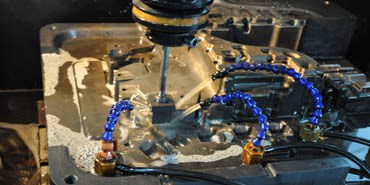Forcing
molten metal into a mold, Die casting like aluminum
die casting china is a high pressure metal casting process. With a high
quality finish, dimensionally accurate precision metal parts are produced by it.
Making it perfect for the mass production of products, its ability to produce
detailed parts is high. From non-ferrous metals such as tin, copper, zinc,
magnesium, aluminum, pewter, and lead, Die castings are made.
Cold
or hot chambers are the two methods of die casting. On the type of the part and
metal, the process that is used depends. With metals that have a high melting
point like alloys of copper, brass, or aluminum, the cold chamber method is
used. To metals that won‘t dissolve on being heated, Hot chamber die casting is
limited. These metals include magnesium, lead, and zinc alloys.
Offering
a broad range of components and shapes, the die casting process used by aluminum die casting manufacturer is economical
and efficient. To be visually appealing, Parts produced can be produced and have
a long life. They offer designers remarkable benefits.
Complex
shapes with close tolerances are produced by the high speed of die casting
produces requiring no after production processing. Additional shaping or tooling
is not required at all. With high tensile strength, Final parts are heat
resistant.
The
presence of iron within the alloys is one of the reasons for the limited
ductility of aluminum die casting alloys. To minimize soldering (sticking) of
the castings to the uncoated and unprotected steel die, the iron is added which
occurs with die casting due to the high injection speed used. Its final use
determines the kind of metal used in die cast. For truck and automobile parts,
Aluminum is used due to its corrosion resistance and light weight, while stainless
steel is sued to make medical instruments.
After
and during the melting process, Metals for casting must maintain their characteristics
and properties. The kinds include:
- Zinc
- Aluminum
- Bronze
- Brass
- Lead
- Tin
- Silicon tombac
- Magnesium
- Carbon steel
- Stainless steel
Benefits
As it takes very little energy to melt, Aluminum is cost effective for aluminum die casting. It is resistant to corrosion and rust. It is lightweight. It accepts surface finishes, conductivity, ensures dimensional stability, and strength at high temperatures. It is also durable and long lasting. Follow us on Twitter







